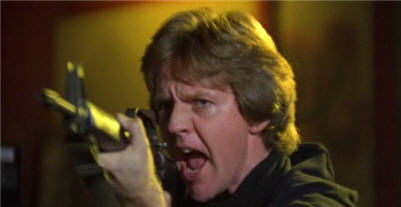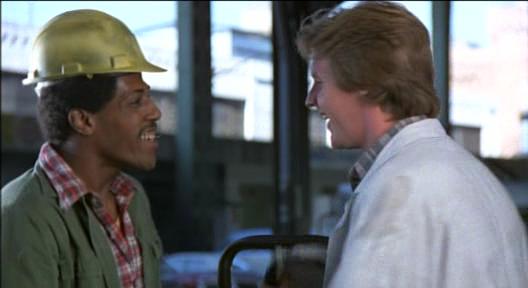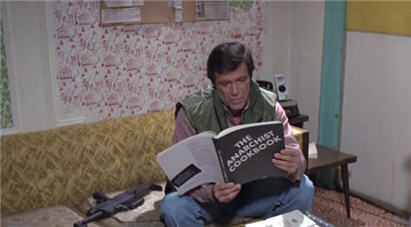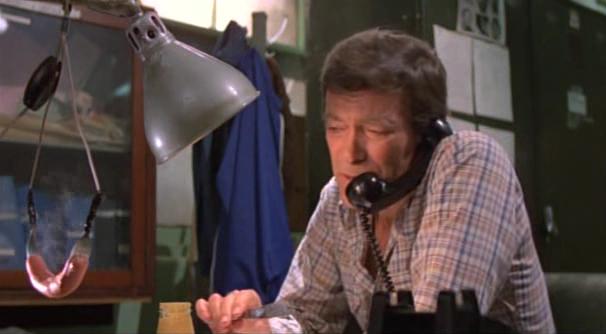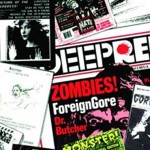THE EXTERMINATOR
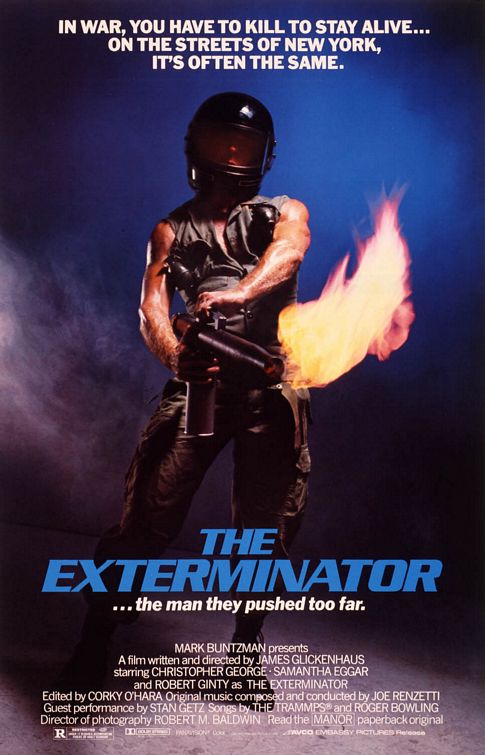 THE EXTERMINATOR
THE EXTERMINATOR
James Glickenhaus, USA 1980
Synapse Films
The late 70s saw an influx of ‘coming home’ films that dealt with post-war reintegration, but many vets were horrified at what they perceived as an unwanted stereotype being fashioned for them as society’s suicidal losers (at best) or dissociated violent psychopaths (at worst). The 80s mainstream offerings attempted to turn this around by turning vets into fantastical, misunderstood but sympathetic action heroes – as in First Blood (1982), Uncommon Valour (1983) and Missing in Action (1984) – and James Gickenhaus’ The Exterminator (1980) heads them up as the earliest of this new crop.
More Rolling Thunder than Death Wish (the latter of which it was accused of ripping off), The Exterminator’s ad campaign, with the tagline “A New kind of soldier in a new kind of War” depicted a masked musclehead holding a flamethrower, surrounded by a giant explosion. These images do appear in the film incrementally, but are condensed into one powerful levitra cialis viagra image for the video box for maximum exploitation potential. The film itself is a much more subdued affair that, above all else, puts value on loyalty, friendship and empathy, with violence considered a necessary, (hopefully) temporary side effects levitra step to re-establishing these values.
The film begins in Vietnam (in actuality Indian Dunes, California, in the same location where the ill-fated Twilight Zone ‘Nam footage was shot three years later) where US soldiers John Eastland (Robert Ginty) and Michael Jefferson (Steve James) violently break out of captivity from the Viet Cong after witnessing the beheading of one of their platoon members (the film’s only exceptionally gory setpiece, created by Stan Winston). Enveloped by gunfire and massive explosions, the two are shown mowing down the Viet Cong as a helicopter comes to their aid. The sequence’s impressive pyrotechnic blasts (seeing explosions like this instantly illustrate why today’s computer-generated fire FX are so lame) were created by Paul Stewart, who would later become embroiled in a manslaughter case when his overzealous explosions on the set of The Twilight Zone Movie contributed to helicopter pilot Dorsey Wingo losing control levitra vardenafil nachnahme and crashing onto the set, beheading actor Vic Morrow and a child extra, and crushing a second child.
The helicopter from the ‘Nam scene seamlessly transitions to a night flight over New York City as Roger Bowling’s country-tinged ‘Heal It’ provides a sonic sense of tragedy foreshadowing what’s to come as these two POWs try to reintegrate into American society after the war. They find a new war on their home turf, with corrupt politicians, ineffectual police, ruthless mob types and weaselly thugs running amok in the streets – not to mention the war within, as they struggle with occasional Vietnam flashbacks.
Robert Ginty is an unlikely action hero – his cornbread looks and pouty jaw make him look too friendly, like a less menacing Paul Koslo, but that’s just a personal opinion – despite his comparatively straight role on TV’s The Paper Chase, Ginty was a hot property as a TV action star at the time, and had previous experience as a war vet from both TV’s Baa Baa Black Sheep and Hal Ashby’s Coming Home (and would play a Vietnam vet again in his own directorial feature Vietnam, Texas in 1990). He’s third-billed here, after Christopher George and Samantha Eggar, but this is totally his film – although it takes several scenes until we realize that, as the film misleads us into thinking the film is about his friend, played by Steve James (also of Glickenhaus’ The Soldier and McBain). The shift of the narrative from one character to the other is clever actually, as it creates an equivocacy between them that will be paralleled later in John’s relationship with Christopher George’s character, also a Vietnam vet.
John and Michael work early mornings at a New York meat-packing plant. Their boss pays off a mob protection racket, who despite extorting payments, also send their gangland goons ‘The Ghetto Ghouls’ into the warehouse to steal product. On one such excursion, the thugs levitra 20mg side effects are discovered by John and Michael, who use their military-trained fight tactics to beat, debase and chase them off. But the thugs aren’t about to take such humiliation lightly, and later that day they find Michael and http://www.spectacularoptical.ca/2021/02/levitra-pills-free-sempal/ brutally attack him, leaving him paralyzed with little hope for recovery. John’s deep bond with his friend is made apparent as he promises to take responsibility for Michael’s family – but also vows to find the men responsible and make them pay. And not just the low-level goons, but also the moneyed mobsters that allow such street scum to proliferate.
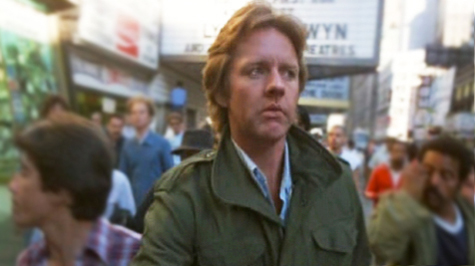 What follows is a series of revenge sequences as John takes on gang-members, mob bosses, pimps and pedophiles, using a varied arsenal of weaponry that includes a flamethrower, an electric carving knife, the city’s ready supply of sewer rats and a human-sized meat-grinder. The world John traverses through is an East Coast Deuce version of the strip in Gary Sherman’s later Vice Squad, and aside from the film’s narrative trajectory it’s a great, flashy timepiece depicting a bygone era in NYC’s saga of sleaze (one of my favourite things while watching exploitation films is marquee-spotting: in this case he walks past a double bill of Cauldron of Blood and Beyond the Door). The film sometimes jumps too quickly between these scenes, which – although done deliberately for pacing – jarringly take us out of the flow of the movie, and it takes a minute to get emotionally re-situated.
What follows is a series of revenge sequences as John takes on gang-members, mob bosses, pimps and pedophiles, using a varied arsenal of weaponry that includes a flamethrower, an electric carving knife, the city’s ready supply of sewer rats and a human-sized meat-grinder. The world John traverses through is an East Coast Deuce version of the strip in Gary Sherman’s later Vice Squad, and aside from the film’s narrative trajectory it’s a great, flashy timepiece depicting a bygone era in NYC’s saga of sleaze (one of my favourite things while watching exploitation films is marquee-spotting: in this case he walks past a double bill of Cauldron of Blood and Beyond the Door). The film sometimes jumps too quickly between these scenes, which – although done deliberately for pacing – jarringly take us out of the flow of the movie, and it takes a minute to get emotionally re-situated.
In the midst of all this is a blossoming love story between Det. James Dalton (Christopher George) the flatfoot assigned to the ‘Exterminator vigilante case’ -as it is becoming known- and local doctor Megan Stewart (Samantha Eggar). There are a few pivotal dialogue scenes they share that shed light on the plight of the returning vet – Dalton is an example of a vet who has readjusted to life back home, but he still empathizes with how difficult it is to be trained to kill indiscriminately, to be surrounded by (and participate in) grotesque inhumanity and then to be expected to come back home and live life as though these horrors never happened. He knows that these images never leave you, that – in the words of Jon Voight’s character in Coming Home – “you have ghosts to carry around”.
But honestly Dalton and Megan seem like afterthoughts in the film – their romance adds nothing other than an excuse for Dalton to be at the hospital when John pops in to visit his paralyzed friend, and one of their dates offers a means for jazz legend Stan Getz to perform live – although this footage is curiously fleeting. The romance element is probably meant to reiterate how it’s possible for a vet to resume an emotionally healthy life after the war, but ultimately these scenes are just boring. Christopher George is more captivating on his own, and the parallel between he and Ginty’s character is drawn clearly when you compare scenes of them each opening their respective ‘special boxes’, chests that contain their old ‘Nam weaponry. The bond between them – strangers though they may be – is cemented in this image of a harmful thing that is tucked away, a symbol of their shared trauma.
Of course there’s also the issue of whether the film rewards or reprimands the concept of vigilantism. In the film, a presidential election is close at hand, making the vigilante of immediate concern to governmental authorities, especially when The Exterminator sends a letter to the police boasting that he is going to do their job for them. The CIA becomes interested in the case when a US senator is found dead in a chicken palace torched by our protagonist, which leads to increased pressure on Dalton to solve the case (Dalton clearly resents the CIA’s involvement, resulting in the classic line: “I think you have to take a shit and it’s coming out of your mouth instead of your asshole” ). The film carefully balances the line between conservative, reactionary politics (vigilantes are often beloved characters to right-wingers) and the mistrust of the establishment characteristic of the left. This balance was reflected in the film’s real-life setting: at the time, NYC had enthusiastic but ideologically schizophrenic leadership from Mayor Ed Koch – who made the first headway into ‘cleaning up’ Times Square but also was openly pro-gay rights and insistent on maintaining New York’s exotic image as the city that never sleeps. It was during Koch’s reign that an abundance of major artistic talent was allowed to flourish; it was an exciting and unpredictable time.
Released in a DVD/Blu Ray combo pack, Synapse’s transfer is beautiful, and in fact, the film looks almost too clean and crisp for its gritty subject matter (even the hospital has red gels!). The additional violence and gore boasted on the cover is nothing that would be considered excessive in this day and age – a longer beheading sequence, a shot of the viscera coming out of the human meat-grinder – but much of the violence happens offscreen; the film is not nearly as tasteless and reprehensible as some 80s critics would have us believe. Director James Glickenhaus offers an articulate and trivia-laden commentary track, the other bonus features being theatrical trailers and TV spots for the film.
Greatest moment in the film: Christopher George cooks a hot dog by suspending it from two forks attached to a lamp. According to the commentary, this works! To be tried at home immediately!
– Kier-La Janisse
—————————–
Buy the film on Amazon HERE or direct from the Synapse website HERE.

 September 1, 2011
September 1, 2011  No Comments
No Comments
